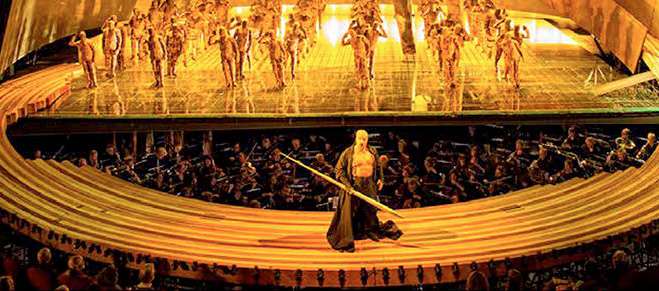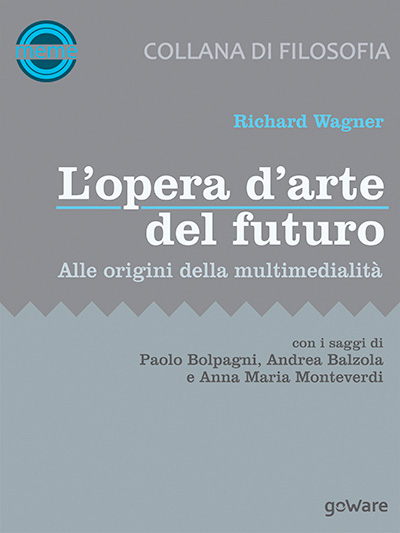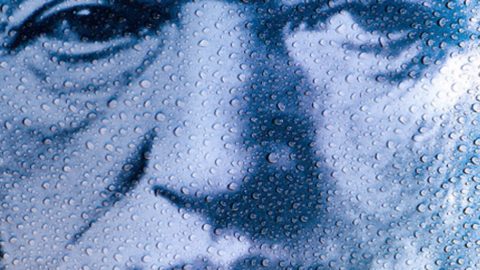A fundamental work has recently been republished for understanding modernity and the developments of contemporary art and aesthetics. It is a seminal book that has influenced entire generations of artists and thinkers. È The artwork of the future by Richard Wagner in Italian translation republished by goWare with a large introductory apparatus with essays by Paolo Bolpagni, Andrea Balzola and Annamaria Monteverdi.
Das Kunstwerk der Zukunft, published in Leipzig in 1850, is a short, intense, controversial, and sometimes confused but always ingenious work, which aims to revolutionize the entire concept of art in the Western tradition. Wagner's total opera concept is a forerunner of the Internet mash-up concept that shapes much of the art of cyberspace. This is why young digital artists should confront the ideas of the great and controversial German musician.
We are pleased to offer our readers an excerpt from the new goWare edition. This is the essay by Anna Maria Monteverdi entitled The new tech scene and the Wagnerian legacy.
Enjoy the reading!
Theatre: magnetic field for all the arts
The multimedia perspective of the theater perfects the utopia of synthesis of the historic avant-garde arts: Wagner's Gesamtkunstwerk (the total or common or unitary work of art according to the different translations) or the unifying drama of word and music (Wor-Ton -Drama) expressed in particular in The work of art of the future (1849), prefigured a common aspiration to an ideal of harmony of the different languages that make up the show; in essence, we shall say today, that principle of the totality of the arts proposed a "strategy of convergence, correspondence and connection"[1].
Despite the diversity of theoretical proposals, the theater becomes a "magnetic field for all the arts" (Kandinski): from the expressive totality of Edward Gordon Craig's new theatre, a place of "visual music", to the organic and bodily synthesis of of space and the arts of time according to Adolphe Appia, to the abstract scenic composition of sound, word and color by Wassily Kandinsky supported by the constitutive principle of the whole unity which was not meant to objectify reality but constitute a spiritual event capable of arousing vibrations and resonances shared by the public.
The utopia of the synthesis of the arts is linked to the formulation of the theater of totality of the Bauhaus with the "simultaneous synoptic and synacoustic" representation of Moholy-Nagy and the "impressionist symbiosis of languages" of the technological multi-scene of Joseph Svoboda that in the shows of the Magic Lantern it combined in a synchronic composition, plastic and sound, the action of the actor or dancer, the kinetic scene, stereophonic sound, mobile projection screens and cinema.
We find an echo of that principle of totality in the programmatic No Borderline between Arts by George maciunas for the Fluxus movement of the XNUMXs and XNUMXs: no longer sculpture, poetry and music but an event that encompasses all possible disciplines.
Synthesis, totality and synaesthesia have declined in a renunciation of the traditional spaces of the Italian theater to revitalize, in an expressive and relational sense, found places of daily experience connoted in this way with a character of dramatic efficacy. It is a journey towards a non-linear and kinetic-visual narration towards unprecedented ways of physically approaching the viewer up to its inclusion in the work. The ever-increasing technological expansion made of interactive devices satisfies a need for action, proximity and mobility with respect to the scattered event or events, mobility which also concerns the overriding of roles and interchangeability between actor and audience.

The search for the observer's participation and true "immersion" within the work begins with the 360° pictorial panoramas and with the multi-view experiment or simultaneous cinema, of Abel Gance (Napoleon, 1927), to continue with the Cinerama presented toParis World Exhibition which proposed ten 70mm films projected simultaneously, a pioneering attempt to expand the field of vision of films by exploiting the peripheral areas of the human eye.
On the one hand, the cinema of the avant-garde calls for the involvement of all the senses with hemispherical or rotating screens, simultaneity of projections, speed alterations, general subversion of the spectator's passivity, on the other the theater with machinery for moving the scenes, revolving platforms, simultaneous and circular stages, film projections (Mejerchold in Upside down Earth), dynamic and innovative three-dimensional scenography (helicoidal ramps for RUR by Kiesler) opens up to the perception of what Maria Bottero defines with a beautiful image «the curvature of the world», that is towards a multidimensionality and a new relationship between actor and audience achieved both with architecture and with the use of kinetic images synchronized with the stage action[2].
The architect Walter Gropius declared that the purpose of his "Total Theater" designed for Piscator had to be to drag the spectator to the center of the scenic events and "within the effective radius of the work". Erwin Piscator the founding director of the Proletarisches Theater in bankrupt Germany November Revolution di Karl Liebknech e Rosa Luxemburg and pioneer of a multi-spatial and multimedia scene in Despite of everything (1925) he inserted both still images and documentary film, i.e. authentic films showing the horrors of war; in Oplà, we live (1927) together with the set designer Traugott Müller designed a multi-storey scenic construction providing for a large use, as well as drawings by George Gross, of film projections to create «a connection between the scenic action and the great forces acting in history». Frederick Kiesler's Endless Theater, Oskar Strandt's Annular Theater, Farksas Molnàr's U-shaped theater up to Poliéri's most recent devices (the gyroscopic room, the triple stage, the mobile automatic stage, remote-controlled stage and room, rotating and modifiable), are some examples of a research aimed at determining an enlargement of the scenic frame, which literally envelops the public in an ideological drive towards global participation.
Total theater also implies collaboration with professionals from different fields; the stage is configured more and more as a laboratory, as a collective planning: the mirage of a collective dramaturgical creation (Piscator), of an atelier theater (Svoboda), of a theater-laboratory (the Bauhaus school in Weimar and Dessau; the Teater laboratorium of Grotovsky), of a theatre-studio (Mejerchold) which gives value to the planning, conceptual and practical phase, anticipates the concept of a team typical of the current multimedia theatre. The complexity of the design phases of a technological scene in fact implies a rethinking of the concept of direction while the theater troupe absorbs qualified technical figures such as engineers, technicians and processors of sound and light, computer scientists. The laboratory becomes the central moment of the research and it is increasingly the work of a technical-artistic collective also open to contributions from the public.
From the totality of the arts to intermedial ambivalence
The adaptation of the new theater to the guiding principles of the new media has led to an evolution from the by now historic "multimedia scene" (in which an exchange took place on a par with the media) towards the "ambivalent" one (in which the "media format" of individual independent supports on their integration). Concept well expressed by the German director and composer heiner goebbels which specifies how much his theatrical works - which contain both musical and multimedia elements - are not at all aimed at a "total Wagnerian work of art":
I don't aim at the Gesamtkunstwerk, on the contrary. In Wagner everything tends and works towards the same end. What you see is exactly what you hear. In my works, light, words, music and sounds are all forms in themselves. What I try to do is a polyphony of elements in which everything maintains its integrity, like a voice in a piece of polyphonic music. My role is to compose these voices into something new[3].
Artistic contemporaneity is made up of paradoxical grafts and mixed productions, of complex projects that arrive indifferently on the web, in art galleries and in theatres: in this generalized «computerization of culture» (following Lev Manovich), an open, mimetic and mutant artistic phenomenology is produced.
In fact, the expressive freedom of a new techno-artistic genre deriving without distinction from video clips, installations, concerts, vjing, graphic art, up to animation cinema and even video game art is privileged. Not mixing, but intertextuality: intertextuality is the prevailing logic of new media productions, recalls Giovanni Boccia Artieri:
That is, we find ourselves within a logic of production of texts that echo previous texts, proceed on the game of quotations, evoke and suggest, are self-referential, and at the same time open up to remake, producing a state of particular excitement for the form[4].
Ambivalence indicates an object that has a double property or function, which presents itself under two different aspects (not necessarily in opposition): in these new technological productions the theater does not arise from the theater and above all it does not end with the theatrical act, but acquires an infinite vitality thanks to the digital being able to expand in the form of a film, an installation, an autonomous work of art. On the one hand we find a historical poetic interweaving of languages, on the other an aesthetic proposal closer to the digital theme which considers the individual elements of an artistic project as multimedia objects (or texts) as interchangeable, open to the most diverse incarnations and such to be able to experience all the possible media joints, in an unprecedented technological nomadism. Thus, each format can be alternatively considered an autonomous artistic realization or a stage in a further elaboration process – virtually infinite and rigorously open.
The principle of variability makes it possible to have numerous options available to modify the performance of a program or a media object: a video game, a website, a browser or the operating system itself. [...] If we applied this principle to culture tout court, it would mean that all the options that can be used to give a cultural object its own specific identity could in theory always remain open.[5]
The result is an indeterminacy of genre which is the characteristic of the new digital formats, apparently devoid of a structural model of classification. It is, as Laura Gemini astutely observes.
They are liminoid and intermediate performances that highlight their ambivalence making it difficult to classify. It is an art of performance that has embraced postmodern awareness, which has recognized the existence of a complex network of communication flows and the idea of knowledge as a creative participation of the known object. […] Talking about artistic performance today means thinking neither of the show as a distinct text (whether theatre, television, cinema or sport) nor of the spectacular as a purely aesthetic category. Rather, the fluidity of the mélange must be set as a priority condition and found in those spectacular practices that do not lend themselves to being classified according to rigid formal conventions. The staging itself must be understood as an organization of texts (cinema, theatre, television) which tend towards progressive indistinction, towards a dynamic flow which gives better credit to contemporary forms of communication[6].
Se Rosalind Krauss proposed in Art in the age of the post modern condition (2005) to draw a definitive line to eliminate the word medium «so as to bury it like so many other toxic wastes of criticism and proceed in the world of lexical freedom», Zygmunt Bauman in Modernity and ambivalence (2010) identifies in the concept of "ambivalence" that would break the practice of the normative structural model, of the classifiable order of aesthetic categories, one of the key themes of the postmodern.
The situation becomes ambivalent if the linguistic structuring tools prove to be inadequate: either the case in question does not belong to any of the categories identified by linguistics, or it is placed in several classes at the same time. In an ambivalent situation none of the models learned is the right one or more than one could be applied [...]. The ideal that the naming/classifying function strives to achieve is a sort of large archive that contains all the folders that contain all the objects that the world contains: however, each folder and each object is confined to its own distinct place. It is the impossibility of creating such an archive that makes ambivalence inevitable. […] Classifying consists of the acts of including and excluding. Every time we give something a name, we divide the world in two: on the one hand, the entities that respond to that name; on the other, all those who don't. […] Ambivalence is a side effect of classification work. […] Ambivalence is a suicidal war.[7]
Ambivalence of current technologies as potential for exchange.
Masbedo, Big Art Group, Dumb Type, Tam Teatromusica e Motus they are emblematic of this “ambivalent tendency” of the theatre. In the performances of the Japanese Dumb Type, the participation of the spectator is of an all-encompassing and immersive nature, rich in multiple sensory stimulations (from sub-frequencies to noise, from distorted images, speeded up to multiple videos), as if it were an experimental audiovisual installation.
Motus has always experimented with the contemporaneity of theater-cinema on stage (from Twin rooms to X-cruel tales of youth) and also introduces animated graphics (Pink Noise); the US Big Art Group with the cycle of shows called "real time film" (Flicker, House of no more) recreate a real film set (using a green screen) with the display of make-up effects[8]. A “digital composition” arrives at the theater which unites television, cinema and theater in an unbroken continuity according to a new aesthetic – following Lev Manovich – “anti-montage” or «a creation of contiguous spaces in which different elements interact. [...] In the digital composition the elements are no longer juxtaposed but mixed; their borders are erased rather than emphasized».[9]
Masbedo (the video-makers Bedogni-Masazza) try out new forms of transversal performativity, moving deep existential themes from video to theatre. In Theorem of incompleteness, Glima, Autopsia del tralala, Togliendo tempest al mare, Person, the protagonist is the sense of emptiness, disenchantment and existential precariousness, the incommunicability, voluntary isolation as an ultimate refuge, the sisific custody of corporate values , the art that retains the last shreds of humanity, the sterility of human relationships in the general withering and moral decadence of Western society, the need for the infinite. Like restless Hamlets, wandering in the pneumatic vacuum of a tragic condition, evoked in its abysmality by a hyperbaric chamber or by interminable silences, the protagonists live by distilling their oxygen for a rebirth, or at least, for an escape route.
Citing the pioneering performance video experiences of Nam june paik, but also the later ones of Laurie Anderson e Peter Gabriel, Masbedo set up their performances starting from original video creations and then enrich and expand them – radically altering them – with a live musical component.
Theirs is an intermedia art in which music, cinema, video and performance are always closely linked: the main reference for Masbedo is the multidisciplinary territory of video art of the mid-sixties, a fertile ground for experimentation with crossings, crossings and transitions. In that context of creative and experimental effervescence, the "medium video" lived in perfect promiscuity with the other arts with which it was intertwined and confronted.

Anna Maria Monteverdthe. Theater and digital media scholar; lecturer in various Academies (Lecce, Brera, Turin) and Universities (Dams of Genoa, Faculty of Letters, Cagliari), she is the author of volumes on theater (Il teatro di Rober Lepage) and on digital performance (Nuovi media nuovo teatro) and on multimedia art (The digital multimedia arts, Garzanti, 2014). She is co-founder with Oliviero Ponte di Pino of www.ateatro.it.
[1] E.Quinz, in A.Balzola, AMMonteverdi, The digital multimedia arts. Milano Garzanti 2005, p.109.
[2] M. Bottero, Frederick Kiesler, Milan, Electa, 1995
[3] See: AMMonteverdi, Remedying the theater with shadows, machines, new media, La Spezia, Ed. Giacché, 2013.
[4] G.Boccia Artieri, The material substance of the media, preface to A.Darley, Digital Videoculture, Milan, FrancoAngeli, 2006
[5] L. Manovich, The language of new media, Milan, Olivares, 2001.
[6] L.Gemini, Creative Uncertainty. The social and communicative paths of artistic performances, FrancoAngeli, Milan, 2003, pag. 69-70.
[7] Z. Bauman Modernity and ambivalence, Turin, Bollati and Boringhieri, 2010 p.12.
[8] See: AM Monteverdi, New media, New theater, Milan, Franco Angeli, 2011
[9] In the chapter Composition from The language of new media, Lev Manovich underlines how in digital composition the aesthetics of continuity typical of computer culture and opposed to the aesthetics of film editing are objectified: «Editing aims to create a visual, stylistic, semantic and emotional between the various elements, instead the digital composition tends to mix them in an integrated whole, a single gestalt». L.Manovich, The language of new media, Milan, Olivares, 2001, p.187.





